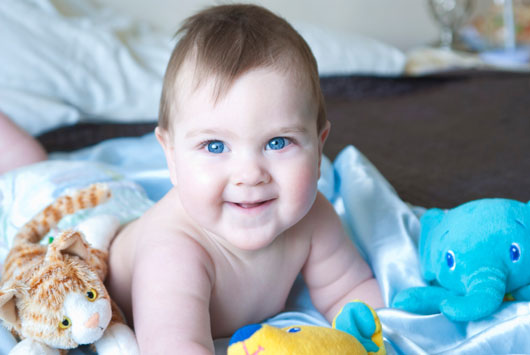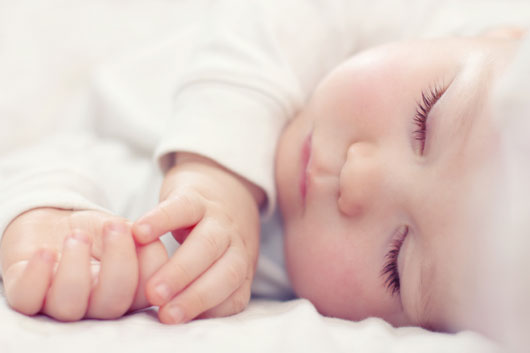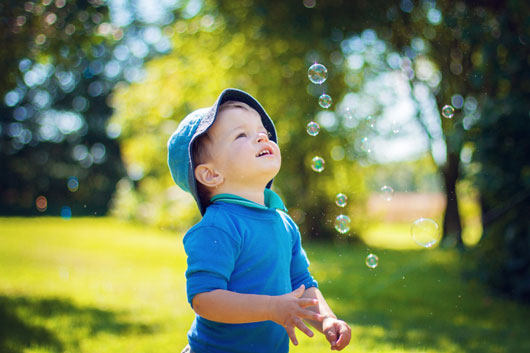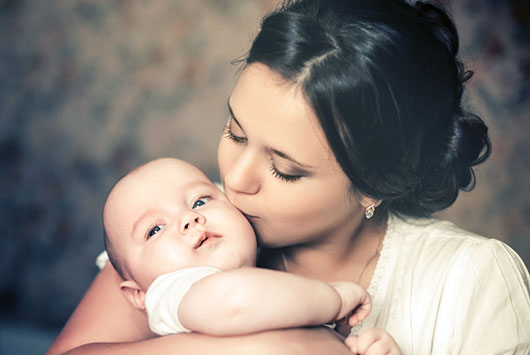
If your mom or mother-in-law is vocal and gives you baby advice, baby sleeping positions is probably one of your most common clashes. Medical views on how to keep babies safest while sleeping have changed since previous generations who, fearing asphyxia if their back-lying babies were to spit up, put them to bed on their bellies. Now we believe that while tummy time will definitely strengthen a baby’s neck and back, preparing her to get around on her own, time on the belly is best spent during waking hours.
Doctors now recommend that parents keep cribs free of excess bedding, such as pillows, blankets, and bumpers, and that babies be put down on their back. There are a few reasons for this, as Fern Hauck, expert on sudden infant death syndrome (SIDS) explains: “Preventing SIDS is the most important reason to put your baby to sleep on her back, but a study published in 2003 in the Archives of Pediatrics and Adolescent Medicine found other benefits, too: Infants who sleep on their back suffer from fewer ear infections, fevers, and stuffy noses than babies who sleep in other positions.” While these safety precautions are meant to ensure that baby’s breathing be free throughout her night’s sleep, ensuring your baby’s comfort is a key factor in getting one for yourself.
Newborns sleep an average of 16 hours in a 24-hour period, beginning with shorter spurts, and gradually sleeping for longer periods as they approach three months. Pampers Baby Dry diapers keep babies comfortable and dry for longer, as their diaper changes become less frequent throughout the night and during nap times. With both safety and comfort in mind, parents of young babies have to balance the important facts about baby sleeping positions and their own child’s preferences. Here are 15 more things to keep in mind while getting your baby—and you—as many zzz’s as possible.
1. Back on Track
The American Academy of Pediatrics recommends that babies be put down on their backs to sleep. You may hear a lot of anecdotal evidence to the contrary, but the official hard line from your pediatrician will likely be: put babies to bed on their backs.

2. 0 to 6 Months
This recommendation is primarily geared toward babies 0 to 6 months of age, but is generally the rule of thumb for the entire first year.
3. Myths
You can tell your mom that there is no evidence to support the belief that back baby sleeping positions result in more choking more than those who sleep on their side or bellies.
4. No Harm
In fact, there is no ill effect caused by sleeping face up for a healthy baby. If your child suffers from any condition that is not benefitted by back sleeping, your doctor will inform you and advise you accordingly.

5. Tummy Time
Even though babies should sleep on their backs, spending waking hours on their bellies makes them stronger and counteracts the flat spot that can develop on the back of the head as a consequence of back-sleeping. It’s a good thing Pampers Baby Dry absorbs moisture away from baby’s delicate skin regardless of her position.
6. Sleep Surface
To ensure that your baby is comfortable sleeping on her back, you must select the right surface. The mattress should be firm, never a waterbed, should be fitted with proper and not loose bedding.
7. Roll with It
If you find that your baby is strong enough to roll over and turns during the night, try not to worry. Always place baby to sleep on her back, but once she can roll onto her tummy (sometimes as early as 3 months) she may do it in the middle of the night. Her Pampers Baby Dry will roll right with her and keep her from leaking.
8. Monitors
There are a number of monitors on the market that are designed to track baby’s movements throughout the night, always ensuring that they are still breathing.

9. Sleep Space
While it is a good idea to keep your infant sleeping close by, allowing you to tend to and feed baby more easily, experts recommend that baby have her own sleeping space. Co-sleeping with adults or siblings is not recommended for infants who might be crushed or suffocated.
10. Close By
A bassinet or even a co-sleeper is the best way to keep baby close but not too close.
11. Temperature Control
To ensure the proper sleeping temperature, avoid overdressing your baby.

12. Tangle Free
Remember not to cover her with extra bedding that can tangle if she rolls over.
13. Fitted PJs
Choose fitted pajamas to avoid tangling as well. Everything from her Pampers Baby Dry diaper to her clothes should fit snug to her body, keeping her warm and dry.
14. Rocking
If your baby needs a little help falling asleep, try rocking or patting her and then placing her in her sleeping area right before she is totally asleep, so that she learns to fall asleep and make those last, small adjustments to her position herself.
15. Pacifiers & Bottles
A pacifier is actually thought to reduce the threat of SIDS and also can help to soother a baby who has already been established in breastfeeding. But don’t try to prop a baby bottle in your supine baby’s mouth: it increases the hazard of choking and can cause other problems, like congestion and ear infections.











